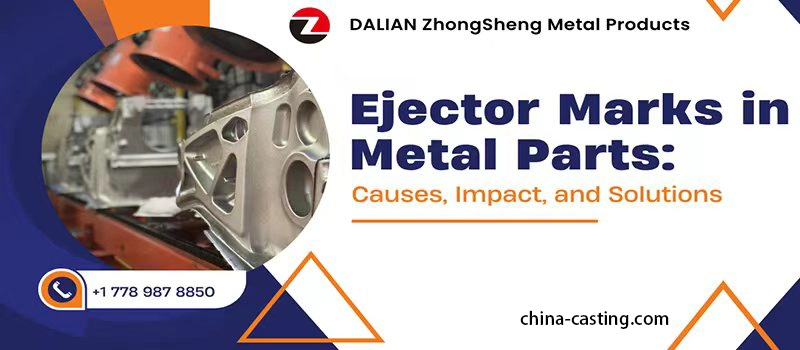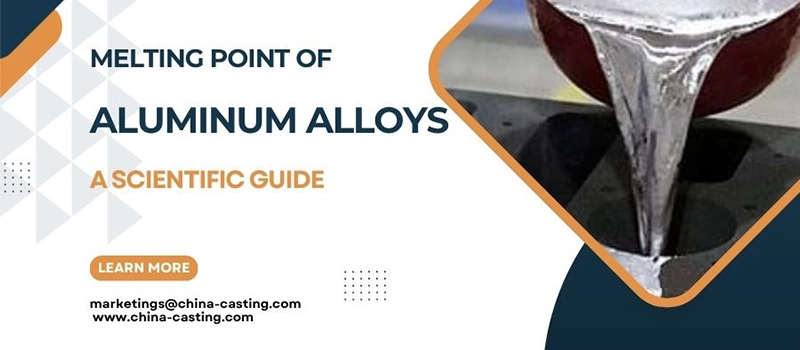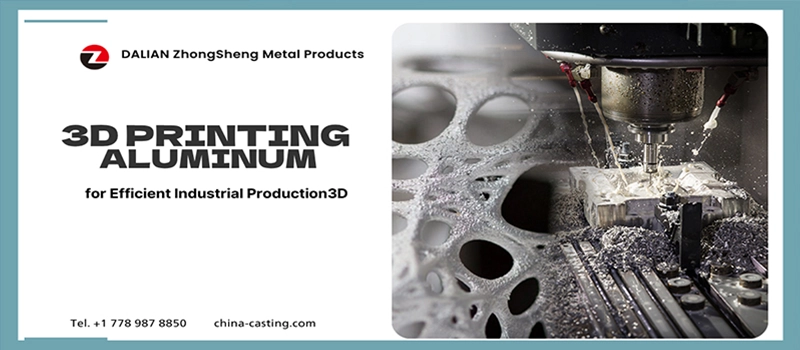Are you struggling to achieve flawless precision on parts with complex curves, angled holes, or multi-sided features? If so, 4 axis CNC machining might be the solution your operation needs. Multiple setups on traditional 3-axis machines slow down production, increase costs, and compromise accuracy. In today’s competitive manufacturing environment, inefficiency isn’t just inconvenient—it’s costly. Every hour lost to re-clamping or reprogramming can mean missed deadlines and wasted resources.
As product designs become more intricate and tolerances tighter, many manufacturers find themselves pushing the limits of conventional machining. Even with skilled operators, traditional milling can’t always meet modern precision demands. The result? Rework, higher scrap rates, and frustrated production teams.
That’s where 4 axis CNC machining changes everything.
By adding a rotational axis to the standard X, Y, and Z movements, 4-axis CNC machines enable the machining of multiple sides of a part in a single setup. This not only improves precision and repeatability but also dramatically increases throughput and design flexibility.
In this comprehensive guide, we’ll explore how 4 axis CNC machining works, the key components that make it so powerful, and why it’s the smart choice for manufacturers seeking efficiency and accuracy. Whether you’re optimizing your shop floor or exploring new production capabilities, this is your roadmap to understanding how 4 axis CNC machining can transform the way you produce precision parts.
What is 4 Axis CNC Machining?
When we talk about 4 axis CNC machining, we’re referring to a process that enhances traditional 3-axis milling by introducing one critical upgrade: a rotational axis. This fourth axis—commonly called the A-axis—allows the workpiece to rotate during machining, giving the cutter access to multiple sides of a part in a single setup.
In a standard 3-axis CNC machine, movement is limited to three linear directions: X (left-right), Y (forward-back), and Z (up-down). While this works well for many basic shapes, it quickly becomes inefficient when machining parts with features on different surfaces, curved profiles, or complex geometries. You have to stop the machine, reposition the part manually, re-calibrate the fixture, and then start again—all of which costs time, introduces risk of misalignment, and increases labor input.
Need Help? We’re Here for You!
With 4 axis CNC machining, the rotary table (A-axis) allows the workpiece to spin around the X-axis while being milled. This enables us to:
- Machine around cylindrical surfaces
- Create angled holes and pockets
- Cut features on multiple sides without removing or re-fixturing the part
- Improve accuracy through fewer setups
In practice, that means tighter tolerances, better finishes, and faster throughput—especially for high-volume or intricate parts. This is especially valuable when producing components such as manifolds, impellers, brackets, or gear housings, which demand precision from every angle.
In our own production lines, we often rely on 4 axis CNC machines when a customer’s part requires operations like helical milling, radial slotting, or multi-face contouring. These are exactly the types of jobs that stretch the limits of 3-axis machines and justify the investment in the fourth axis.
It’s also worth noting that 4-axis doesn’t mean full 5-axis capability, but it does hit the sweet spot for many manufacturers who need more flexibility without the complexity or cost of full 5-axis systems. It’s the perfect balance of cost, control, and capability, especially for industries like automotive, aerospace, construction, and heavy equipment, where we often see parts that require machining from multiple orientations.
In short, 4 axis CNC machining allows us to do more with less:
Less setup, less error, less downtime—but a lot more precision.
How a 4 Axis CNC Machine Works
Modern manufacturing demands speed, flexibility, and accuracy. 4 axis CNC machining delivers all three—by combining the precision of computer-controlled motion with the added freedom of rotary movement. But to understand its full potential, we need to break down how this machine actually operates on the shop floor.
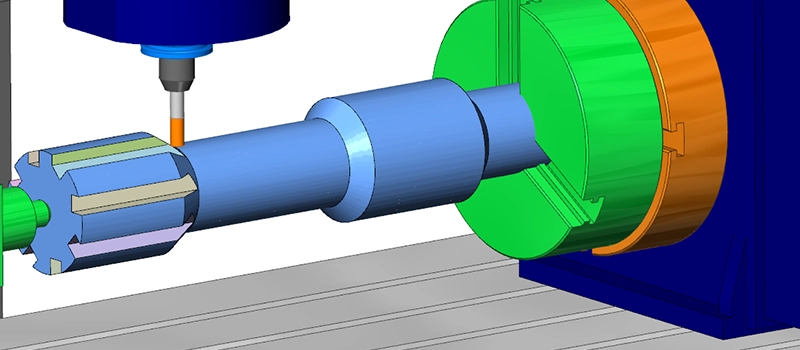
Basic Movement in 4 Axis CNC Machining
In a traditional 3-axis CNC milling machine, the cutting tool moves in three linear directions:
- X-axis: left and right
- Y-axis: front to back
- Z-axis: up and down
This configuration works well for flat, symmetrical components. But when parts require features on multiple faces or around cylindrical shapes, you reach the limits of 3-axis movement.
Enter the 4th axis—usually the A-axis.
This allows rotation of the workpiece around the X-axis while cutting continues in the other three directions. The result? You can machine multiple sides of the part without removing it from the fixture.
This significantly improves:
- Dimensional accuracy (no re-clamping = no misalignment)
- Machining time (eliminates multiple setups)
- Surface finish quality (due to smoother tool paths)
Key Motions and Mechanisms
The Rotary Table (A-Axis)
At the heart of any 4-axis CNC milling machine is the rotary table—the platform that spins the workpiece during cutting. It’s either built into the machine’s base (in vertical machining centers) or integrated as a 4th axis CNC attachment.
Rotary tables come in:
- Manual indexing (basic applications)
- Full 360° servo-driven models (high-precision work)
- Pneumatic or hydraulic chucks for 4 axis CNC machine setups
These enable real-time rotational movement, which is essential for operations like:
- Radial slotting
- Helical milling
- Intersecting hole drilling
- Undercut surfacing
CNC Control Software and Programming
Like all CNC machines, 4 axis CNC machining is driven by a controller using G-code. However, programming becomes more complex as you introduce the A-axis. CAM (Computer-Aided Manufacturing) software like Fusion 360, Mastercam, or UG/NX must generate coordinated tool paths that account for all four axes.
Proper toolpath strategy is critical—especially when transitioning from basic 3-axis operations to:
- 4 axis CNC milling machine programming for simultaneous movement
- 4 axis CNC turning machine functions where rotational cutting is combined with linear feed
- Optimizing cycle times on 4 axis CNC vertical machining centers or horizontal machining centers
Other Features in 4 Axis CNC Systems
Depending on the build, a 4 axis CNC machining center may also include:
- Automatic tool changers (ATC)
- Coolant systems for temperature control
- Dust extraction units (especially in 4 axis wood CNC machines)
- Automated loading systems such as a 4 axis CNC machine with automated loading chuck, ideal for high-volume production
What Sets It Apart
Whether you’re running a compact desktop 4 axis CNC milling machine for prototyping, or an industrial-scale 4 axis CNC horizontal machining center for mass production, the underlying advantage is the same: you’re machining more complex parts in fewer steps.
This makes 4-axis CNC an ideal fit for:
- Intricate aerospace brackets
- Precision automotive components
- Petrochemical valve bodies
- Custom machined agricultural parts
Key Components of a 4-Axis CNC Machine: What Buyers Should Know
Behind every high-precision cut and complex surface is a combination of mechanical and electronic components working in perfect harmony. Whether you’re operating a vertical machining center or a desktop model, all 4-axis CNC machines share a core structure designed to deliver stability, accuracy, and repeatability.
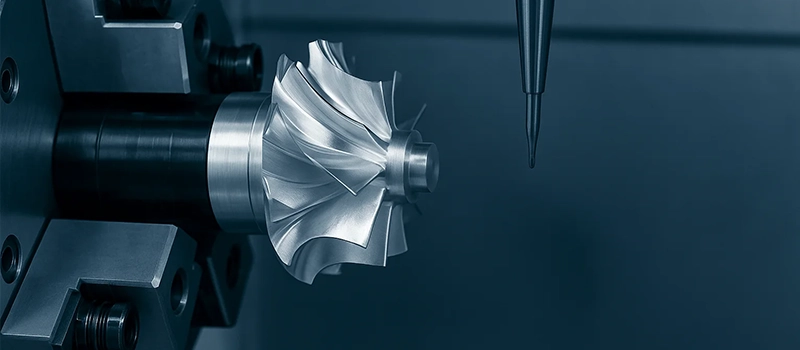
Here’s a closer look at the main components that make 4 axis CNC machining so effective.
Frame and Machine Base
Everything starts with the foundation. A rigid frame—typically made from cast iron or steel—supports the entire system. It absorbs vibrations, anchors all moving parts, and ensures overall machining stability. The heavier and more stable the base, the more precise your final product will be. This is especially critical when machining high-tolerance or high-speed parts.
Spindle Motor
The spindle drives the cutting tool, and in 4-axis CNC machines, spindle design can make or break your output quality. High-speed spindles, often with integrated cooling systems, are ideal for non-ferrous materials like aluminum, while high-torque spindles handle steel and cast iron. Some machines also include automatic tool changers (ATC) for high-mix production.
Rotary Table (4th Axis)
The A-axis rotary table is what transforms a 3-axis CNC milling machine into a 4-axis system. It mounts directly to the worktable and allows the part to rotate around the X-axis during machining. This component is what enables curved surface cutting, angled holes, and multi-side processing without re-fixturing the part.
Advanced rotary tables often include:
- Full 360° servo-controlled rotation
- High-speed indexing
- Integrated braking systems for stability during heavy cuts
- Built-in hydraulic chuck for 4 axis CNC machine setups
This is a must-have for industries that machine parts like turbine blades, impellers, or side-port housings.
Chucking and Fixturing
Holding the part firmly in place during rotation is critical. Depending on the part shape and machining load, different chuck systems are used. For automation-heavy production, many buyers opt for a 4 axis CNC machine with automated loading chuck to save labor time and reduce setup errors.
There’s also a growing preference for self-centering hydraulic chucks, which offer superior grip and allow for faster material changes—especially in 4 axis CNC turning machines.
Linear Motion Systems
Precision depends on more than just rotation. Linear guides and ball screws move the cutting tool along the X, Y, and Z axes. High-quality linear rails ensure smooth travel, while precision-ground ball screws minimize backlash and maintain tight tolerances. On high-end 4 axis CNC machining centers, you’ll often find preloaded linear bearings to reduce vibration and improve repeatability.
CNC Controller
At the heart of every 4-axis CNC system is the controller. This is where the software translates your CAD/CAM files into toolpaths. Advanced controllers handle simultaneous 4-axis interpolation, allowing real-time coordination between linear and rotary motion.
A few controller features to look for:
- High-speed processing of multi-axis G-code
- Touchscreen interfaces for easy operation
- Built-in error detection and compensation algorithms
- Network connectivity for data-driven machining
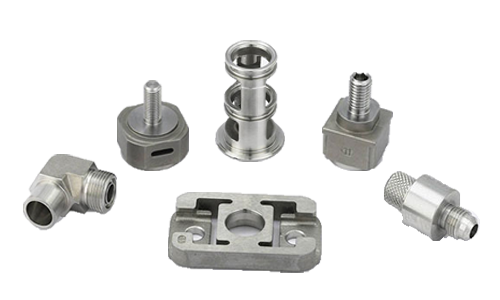
Get a quote now!
Popular brands used in our industry include FANUC, Siemens, Mitsubishi, and Heidenhain.
Optional Systems: Coolant, Extraction, and Automation
For high-volume or specialty machining, it’s worth considering auxiliary systems like:
- Coolant systems (flood or mist type) for thermal control
- Chip conveyors or dust extraction units (especially in 4 axis wood CNC machines)
- Robotic arms or conveyors for material loading/unloading on production lines
These features don’t just improve machining performance—they streamline workflow and lower labor costs.
Types of 4-Axis CNC Machines
There’s no one-size-fits-all solution when it comes to 4 axis CNC machining. The right machine depends on your part geometry, material, production volume, and available floor space. Whether you’re cutting complex aerospace parts or prototyping in a small shop, understanding the main types of 4-axis machines will help you make the right investment.
Here’s a breakdown of the most common types we work with—and how each serves a different need.
Vertical Machining Centers (4 Axis CNC VMC)
This is by far the most popular configuration in 4 axis CNC machining. A 4 axis CNC vertical machining center (VMC) starts with a standard 3-axis setup—spindle above, table below—and integrates a rotary table (the A-axis) horizontally across the X-axis.
This setup is:
- Ideal for face machining, pocketing, engraving, and complex contouring
- Space-efficient for most factories
- Excellent for brackets, mold bases, housings, and flanges
VMCs offer great visibility and accessibility for operators, making them a staple in metal machining shops that require flexibility across part types.

Horizontal Machining Centers (4 Axis CNC HMC)
If your focus is on productivity and chip evacuation, a 4 axis CNC horizontal machining center is the better option. These machines mount the spindle horizontally, with the rotary axis often integrated into a pallet-style system.
We often use HMCs when:
- Machining parts with deep pockets or blind holes
- Producing large batches of the same part
- Working with materials that require efficient chip removal
Their advantage is clear: reduced downtime and less manual handling between operations. But they do come with a higher upfront cost, so they’re better suited to higher-volume production environments.
Desktop 4 Axis CNC Milling Machines
For prototyping, education, or low-volume precision jobs, a desktop 4 axis CNC milling machine offers flexibility in a compact format. These machines provide the same A-axis rotational capabilities, just on a smaller scale.
Though limited in spindle power and work envelope, these systems are great for:
- Rapid prototyping of small components
- Jewelry, electronics, or intricate plastic machining
- Entry-level CNC users exploring 4-axis workflows
We’ve seen clients use desktop models to refine prototypes before scaling up to production on full-size machines.
Applications of 4 Axis CNC Machining
In the world of metal machining, complexity is the new standard. Parts are no longer flat or symmetrical—they’re curved, angled, multi-faced, and often require features from multiple orientations. This is exactly where 4 axis CNC machining has proven itself to be not just useful, but essential.
By adding a rotational axis to conventional milling, this process enables the production of intricate metal parts with a level of speed and precision that traditional setups simply can’t match. As a manufacturer, I’ve seen firsthand how this capability impacts performance across multiple sectors.
Automotive Industry
The automotive sector thrives on precision and repeatability. 4 axis CNC machining is commonly used to produce:
- Transmission housings
- Brake caliper brackets
- Engine mounting plates
- Steering components
Because these parts often require tight tolerances and machining on multiple planes, 4-axis setups significantly reduce the time and error involved in repositioning. They’re also great for finishing castings or forged parts with complex geometries.
Aerospace and Aviation
In aerospace, weight reduction and structural integrity are everything. This means using lightweight metals like aluminum and titanium—and machining them into precise, aerodynamic forms.
4 axis CNC machining services are heavily employed in manufacturing:
- Airfoil brackets
- Turbine components
- Structural fittings
- Sensor housings
Rotational capability is vital here. Many parts need compound-angle machining, which can’t be done efficiently with 3-axis equipment. That’s why aerospace contractors often require 4 axis CNC machining manufacturers to meet ISO or AS9100-grade standards.
Agricultural Machinery
Durability and function drive part design in the agriculture industry. Here, 4 axis CNC machines help produce:
- Axle mounts
- Frame brackets
- Gearbox components
- Couplers and joint systems
These parts often involve cylindrical features, angled ports, and load-bearing surfaces—perfect candidates for rotary-axis machining.
We frequently machine structural and wear-resistant components in hardened steel or ductile iron, and using a 4-axis setup lets us maintain concentricity across complex parts with fewer fixtures and better repeatability.
Mining and Heavy Equipment
Mining equipment parts are massive, rugged, and designed for extreme conditions. With 4 axis CNC machining, we can finish:
- Bearing housings
- Pipe fittings
- Hydraulic mounts
- Counterweight assemblies
Most of these components have deep bores or radial bolt patterns that require rotation during the cut. Using the fourth axis allows us to deliver high-precision parts even when working with difficult materials like alloy steel or high-manganese components.
Need Help? We’re Here for You!
Petrochemical and Industrial Applications
The petrochemical industry often requires pressure-rated components with internal channels, flanges, and angled ports—where 4 axis CNC machining with high precision is crucial.
Typical parts include:
- Valve bodies
- Heat exchanger flanges
- Pump impellers
- Pipe fittings with intersecting bores
Accuracy here directly affects safety and performance, and many clients insist on certified 4 axis CNC machining services that can meet both mechanical and regulatory standards.
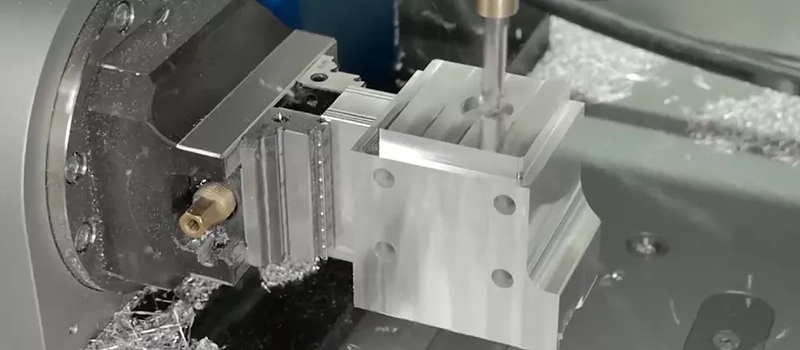
Advantages of 4 Axis CNC Machining
If you’ve ever spent hours re-fixturing a part or struggled to maintain tolerances across multiple setups, then you already understand the value of efficiency and control in machining. 4 axis CNC machining addresses these challenges head-on—and offers clear benefits that can transform a production line.
Here’s what sets it apart.
Enhanced Precision from Fewer Setups
With traditional 3-axis machines, complex parts often require multiple operations across different fixtures. Every time you re-clamp a workpiece, you introduce the risk of misalignment and tolerance drift.
4 axis CNC machining with high precision reduces or eliminates that problem. Because the rotary A-axis allows access to multiple sides of the part in a single setup, we can maintain positional accuracy and dimensional repeatability throughout the entire operation.
This is particularly important for:
- Angular features
- Intersecting holes
- Chamfered edges
- Complex contours that wrap around a part
Whether we’re machining aluminum brackets or cast iron valve housings, the ability to complete more in one setup is a direct path to fewer rejects and tighter tolerances.
Faster Production Times
Speed is a critical competitive factor, and 4 axis CNC machining services often outperform traditional setups by a wide margin.
Fewer setups mean less downtime. Faster toolpaths enabled by simultaneous movement (X-Y-Z + rotation) mean shorter cycle times. And improved access to complex geometries eliminates the need for post-processing or manual finishing in many cases.
This combination allows for:
- Quicker prototype-to-production transitions
- Leaner workflows
- Reduced operator intervention
We’ve routinely cut lead times by 20–40% on multi-face parts just by shifting them to a 4-axis workflow.
Improved Surface Finish and Toolpath Efficiency
When you’re machining curved or angled surfaces using just linear axes, tool marks and abrupt changes in direction are common. But with rotary movement, we can follow the geometry of the part more naturally—resulting in a smoother surface finish and more consistent cutting engagement.
This is a key advantage when producing:
- Sealing surfaces
- Mold cavities
- Decorative or visible parts where finish matters
If your project requires precision, speed, and visual quality, this alone can make 4 axis CNC machining the best choice.
Reduced Labor and Fixture Costs
Think of every setup and re-clamp as a hidden cost. Not just in time, but in:
- Custom fixtures
- Operator attention
- Risk of damage or misalignment
With 4 axis CNC milling machine setups, a single fixture can replace two or three complex setups. For repeat production or high-mix/low-volume runs, that means fewer fixtures to design, build, and maintain.
This also frees up skilled machinists for higher-level work instead of repetitive repositioning tasks.
Greater Part Complexity = More Design Freedom
Designers are no longer limited to flat surfaces or linear cuts. The best 4 axis CNC machines enable features that wrap around the part, are drilled at angles, or require multi-face machining that would be impractical (or impossible) otherwise.
This opens the door for:
- Lightweight structural designs
- Compact multi-functional components
- Reduced assembly steps (machining in one piece instead of multiple)
It’s the kind of flexibility that allows manufacturers to stay competitive in today’s demand-driven market.
Comparison: 3 Axis vs 4 Axis vs 5 Axis CNC Machines
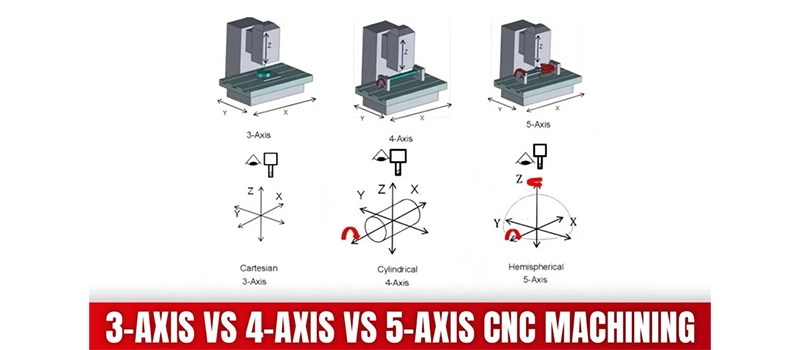
Choosing the right CNC configuration depends on more than just price—it’s about matching the machine to your part complexity, material, and production goals. Here’s how 3-axis, 4-axis, and 5-axis CNC machines stack up:
| Feature | 3 Axis CNC | 4 Axis CNC | 5 Axis CNC |
|---|---|---|---|
| Axes of Movement | X, Y, Z | X, Y, Z + A (rotation around X) | X, Y, Z + A + B (or C) |
| Rotary Capability | ❌ None | ✅ Rotary table (A-axis) | ✅ Full multi-axis rotation |
| Setup Requirements | Multiple setups | Single or fewer setups | Usually single setup |
| Best for | Simple parts, 2D/flat | Medium-complexity parts, multi-face | Highly complex 3D geometries |
| Machining Speed | Moderate | Faster than 3-axis | Fastest, depending on part geometry |
| Surface Finish | Basic | Improved (smooth curves & angles) | Excellent (freeform surfacing) |
| Programming Complexity | Simple | Moderate | Advanced |
| Machine Cost | $ (Low) | $$ (Mid-range) | $$$$ (High-end investment) |
| Operator Skill Level | Basic to intermediate | Intermediate | Advanced |
| Typical Use Cases | Flat plates, brackets | Housings, angled holes, impellers | Aerospace, medical, turbine blades |
Why 4 Axis CNC Machining Is Often the Sweet Spot
While 3-axis machines are still widely used for simple parts and 5-axis systems offer unmatched flexibility, 4 axis CNC machining hits the balance point for most real-world manufacturing.
Here’s why:
- It allows for high-precision multi-face machining without the cost or complexity of 5-axis systems.
- It significantly reduces setup time compared to 3-axis operations.
- It supports complex geometries, including radial features, cylindrical contours, and compound angles—while remaining accessible to most machine shops.
For many industries—especially automotive, heavy machinery, and general industrial manufacturing—4 axis CNC milling machines are the most cost-effective choice for complex parts without overengineering the process.
Conclusion: Is 4 Axis CNC Machining Right for Your Next Project?
If your parts require complex features, tight tolerances, or multi-surface machining, 4 axis CNC machining is likely the most efficient and cost-effective solution. It offers the perfect balance between precision, flexibility, and productivity—without the steep learning curve or investment of 5-axis systems. Whether you’re scaling up production or optimizing for quality, 4-axis technology gives you the control and capability to stay ahead in modern manufacturing.


